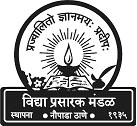 |
|
||||||||||||||
|
|
|||||||||||||||
|
||||||||||||||||||||
|
Mathematicians
Debate the Hole Truth A
British mathematician made headlines this week by claiming to have solved
a problem that had defeated researchers for 140 years: how to make a
classic formula with broad applications in physics and engineering apply
to objects riddled with holes. But a team of American mathematicians
say they had the key insight first, touching off a dispute about as
tricky as the mathematics itself. Who cares? Plenty of engineers and physicists, as the transformation can greatly simplify analyses and calculations. For example, in analyzing the lift produced by air moving over an airplane wing, researchers can use the Schwarz-Christoffel formula to transform a polygonal approximation of an airfoil into a circle, the lift on which is much easier to calculate. Moreover, the transformation lets researchers invoke powerful theorems that apply to functions in the complex plane. Unfortunately, Crowdy says, the Schwarz-Christoffel formula suffers a major limitation: It cannot handle multiple polygons or polygons with more than one polygonal hole in them. Punch a couple of triangular holes in the stop sign, for example, and instead of turning them into neat circles, the formula generally scrambles them into an unusable mess. In the 1930s, mathematicians figured out how to handle a single hole, but the more general problem stymied them. Now Crowdy says he has solved the problem completely. The key lies in a concept called a Schottky group, which makes it possible to "add" the boundaries of circles a bit the way one might add numbers. That tack allowed him to keep the boundaries in order and extend the Schwarz-Christoffel formula to holes. The finding, which Crowdy published last March in the Mathematical Proceedings of the Cambridge Philosophical Society, has been creating a buzz this week with coverage in several newspapers in the United Kingdom. "If you give me any polygon with any number of polygonal holes, I can map it to a circle with the same number of circular holes," Crowdy says. But mathematicians John Pfaltzgraff of the University of North Carolina, Chapel Hill, and Thomas DeLillo and Alan Elcrat, both of Wichita State University in Kansas, say they had the basic strategy--and a formula--first. Crowdy heard Elcrat talk about that work in 2003, but he says the American trio didn't realize the relevance of the Schottky groups. The Americans' formula, published in 2004, involves the multiplication of an infinite number of terms that goes haywire if the holes are too close together. Crowdy's formula replaces that product with an obscure beast known as Schottky-Klein prime function. Crowdy says his formula will never fail. "I'm very skeptical" of that claim, says Pfaltzgraff. Who should get the glory? Other mathematicians are split. "Is the [Crowdy] approach more analytical, can you do more with it? The answer is certainly yes," says Saleh Tanveer of Ohio State University in Columbus. "You can push it in many directions." However, it remains to be seen if it will be an easier tool to use for specific applications and calculations, he adds. Michael Siegel of the New Jersey Institute of Technology in Newark says credit should be shared equally: "It's a breakthrough, and all these people contributed."
|